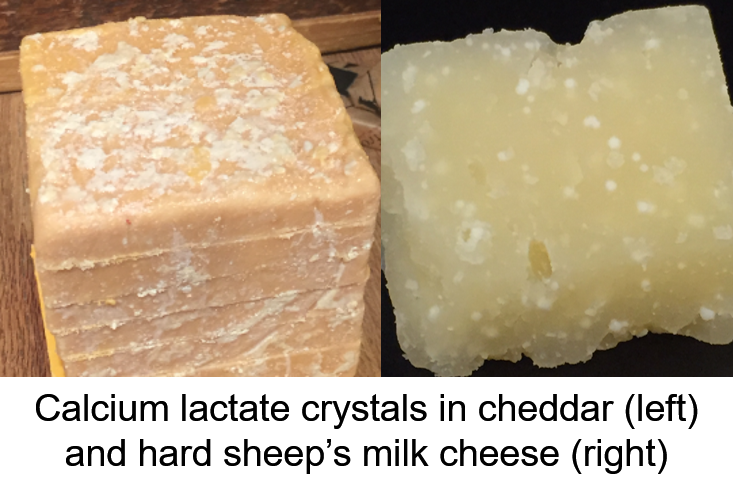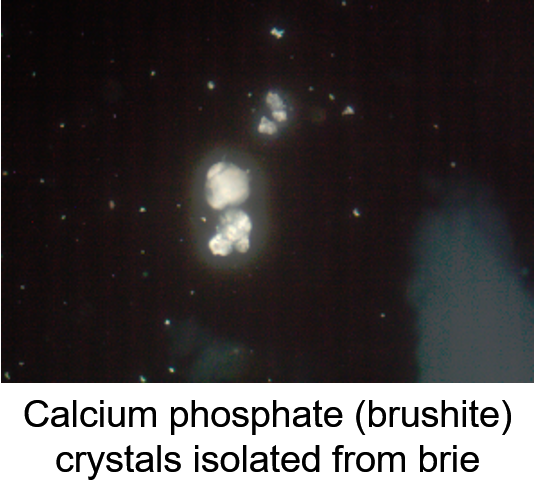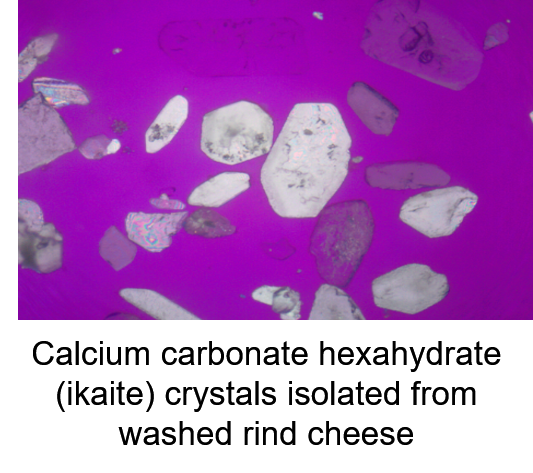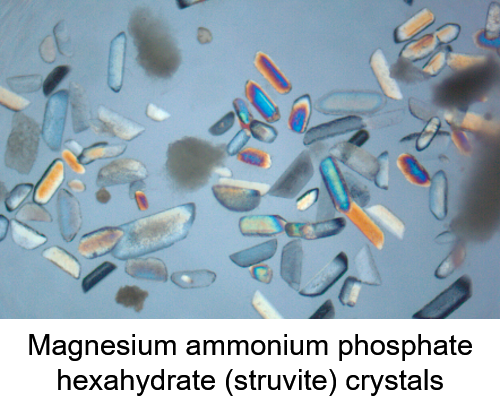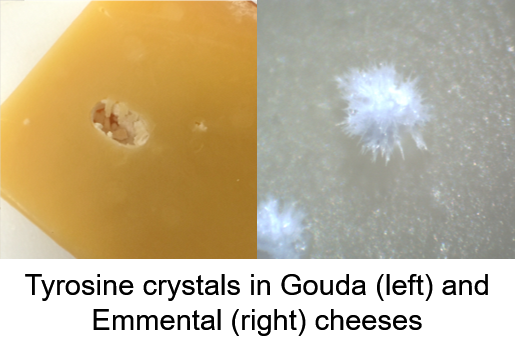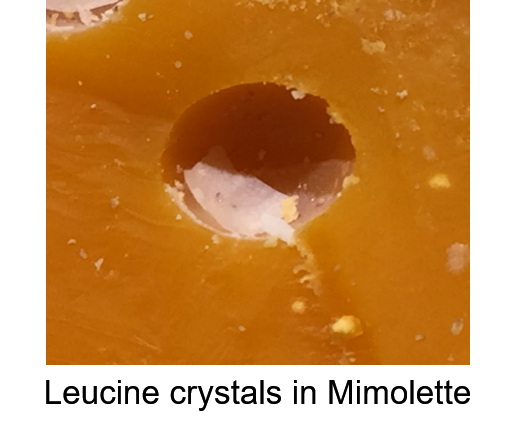Starting at the top! Crystals can be found in all sorts of cheeses. Considered a defect to some, a delicacy to others. Click through the chart to learn about the types that are out there. Click on to find out...
Milk and cheese are chalk full of minerals. There positively charged minerals (i.e. cations) and negatively charged minerals (i.e. anions) in milk/cheese. Cations include potassium, calcium, sodium, and magnesium. Anions include phosphate, citrate, chloride, and carbonate.
Calcium is probably the mineral we most often associate with dairy products. When calcium is combined with other components a menagerie of crystals can be formed! Click on!
Calcium can combine with lactate to form calcium lactate crystals. Lactate is shorthand for lactic acid, which is the end product of fermentation. Simply, the starter cultures used by the cheesemaker break down milk sugar (i.e. lactose) into lactic acid. When you get enough lactic acid and calcium, calcium lactate crystals can form. Most famous on cheddar cheeses, but have been observed in other cheeses as well.
Calcium and phosphate are major structural minerals in cheese (in the form of colloidal calcium phosphate).
Carbonate is the aqueous form of carbon dioxide (that's when CO2 is dissolved in water). Carbon dioxide is produced by the smear bacteria present on washed rind cheeses. It's the end product of lactate (i.e. lactic acid) metabolism. When it combines with calcium it can form calcium carbonate crystals. Two types have been identified thus far...
Magnesium, like calcium, is a divalent cation. This means it has a +2 charge. So Mg2+ is also a structural component of milk and cheese, just to a smaller degree than calcium.
Ammonium is the aqueous form of ammonia. (that's when NH3 is dissolved in water). Ammonia is produced by the smear bacteria present on washed rind cheeses. It's the product of proteolysis (i.e. protein breakdown). When it combined with magnesium and phosphate, it can form crystals called struvite.
Amino acids are the building blocks of proteins. When protein breaks down (i.e. proteolysis), free amino acids are formed. If these build up, they can form crystals in some cases. Since the structure and body of cheese is protein (i.e. casein), there is plenty of potential for amino acid crystals as the cheese structure breaks down.

Tyrosine crystals are perhaps the most famous crystals in cheese. They're found in all sorts of cheeses, included aged Alpine, Dutch, and Italian styles. Blue cheese as well.
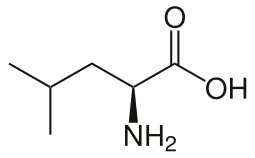
Leucine crystals can be found in many of the same cheeses that tyrosine crystals are.

Lactic acid (i.e. lactate) can come in two forms: L and D. Usually starter cultures produce the L form. L-lactic acid is relatively soluble.
L-lactic acid can be converted to D-lactic acid by certain microbes. This leaves a mixture of L and D forms in the cheese. The D/L form of lactic acid is much less soluble, so is more prone to crystallization.
Brushite is a dihydrate form of calcium phosphate - CaHPO4·2H2O
A form of calcium carbonate found on washed rind cheeses (CaCO3).
A form of calcium carbonate found on washed rind cheeses. Ikaite is the hexahydrate form of calcium carbonate - CaCO3•6H2O
Struvite is magnesium ammonium phosphate hexahydrate - MgNH4PO4•6H2O, found on washed rind cheeses (and canned fish).
Perhaps another type will be found one day...
